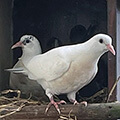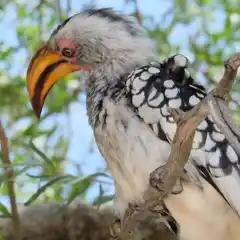







Following the finding that GPR35 is an Inflammatory Bowel Disease risk gene in humans, we wanted to see if a similar link could be found between the G-Protein Receptor and intestinal dysbiosis in broiler chickens. GPR35 seemed to be the most heavily expressed in duodenal tissue of humans, so that was the initial focus of this project. RNA was extracted from the duodenal tissue from a group of healthy chickens and a group of chickens with dysbiosis. cDNA was synthesised to then run qPCRs with reference genes to analyse levels of GPR35 transcription.
Three of the five primer sets that were designed did not produce the expected products, highlighting the variability of gene/transcript sequence. Additionally, RNA extraction from intestinal locations other than duodenum did not yield RNA of desired quality, not allowing for further spatial characterization of the transcriptional levels of GPR35. Last, sample size should be increased in future studies of GPR35 gene transcription.
Return to the Vacation Studentships page.